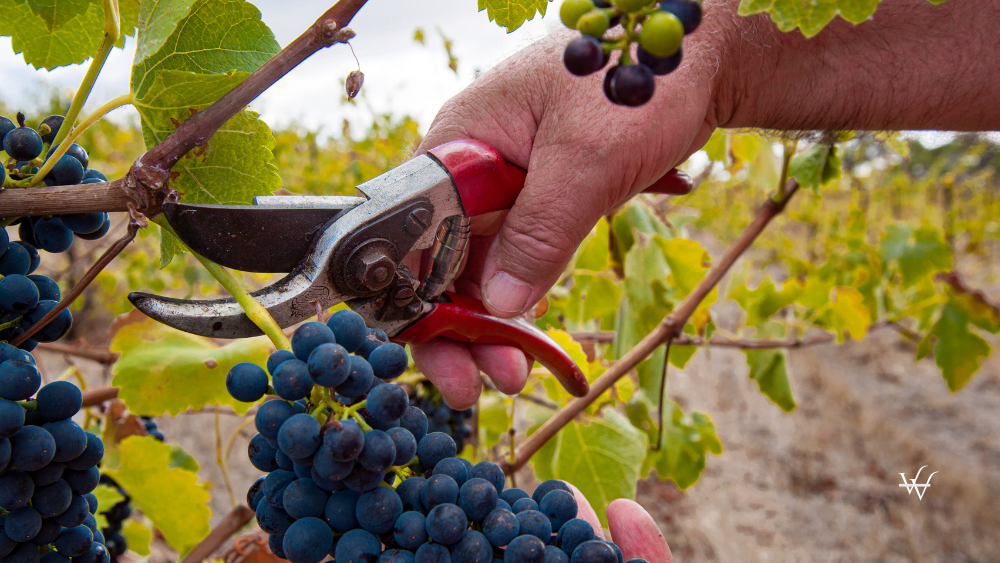Australian Shiraz finds itself at a pivotal moment, grappling with the challenges of shifting market dynamics, climatic adversity, and evolving consumer preferences.
Once a dominant force on international wine tables, the iconic red is undergoing a transformation as producers seek to redefine its style and future relevance.
Declining Harvests and Market Shifts
Recent years have seen a notable decline in Shiraz production. Between 2023 and 2024, harvests reached their lowest levels since 2007, with yields dropping from the traditional 400,000 tonnes annually to 340,000 tonnes in 2023 and a mere 290,000 tonnes in 2024. For the first time in over a decade, Chardonnay outpaced Shiraz in production, reflecting a combination of climate challenges and changing market demand.
Adverse weather conditions, including droughts, heatwaves, and poor flowering, played a significant role in reducing yields. However, economic factors also contributed. The imposition of steep anti-dumping tariffs by China in 2020 effectively ended a lucrative export market overnight, leaving Australian producers with a surplus of unsold wine. This glut, coupled with waning demand, led to unharvested vineyards and even the uprooting of vines in less prestigious areas.
Navigating Export Challenges
The recent easing of Chinese tariffs in 2024 offered a glimmer of hope. China has re-emerged as a key market, with Shiraz exports valued at USD 168 million in the year to September. Yet, this resurgence comes with reduced profit margins—the average price per litre dropped from over USD 9 in 2019 to just USD 6.80 in 2024. In other markets, such as the UK, Shiraz struggles even more, with prices averaging USD 1.78 per litre.
Despite these hurdles, changing consumer preferences present opportunities for innovation. Demand for lighter, fresher wines is growing, encouraging producers to explore new approaches that cater to contemporary tastes.
Rethinking Shiraz Styles
The reinvention of Shiraz begins with winemaking. French oak barrels have largely replaced American oak, softening tannins and introducing subtler flavor profiles. Many wineries are reducing their reliance on new oak altogether, opting for concrete vats and egg-shaped tanks that better preserve fruit purity. Experimental techniques, like whole-bunch fermentation, are adding layers of complexity, though their application remains a work in progress.
Viticultural practices are also evolving. Earlier harvests prevent excessive sugar accumulation, resulting in wines with lower alcohol levels and brighter acidity. Cooler regions, such as Henty and the Australian Pyrenees, are gaining favor over traditionally warmer areas like Heathcote, enabling the production of more refined and elegant Shiraz styles.
Emphasizing Regional Identity
Producers are shifting focus from a monolithic image of Shiraz to one that celebrates regional diversity. This approach highlights the unique characteristics imparted by specific terroirs. In Barossa, for instance, some wineries remain committed to crafting bold, full-bodied wines, while others are diversifying with fresher, modern interpretations. By emphasizing these regional nuances, Australian Shiraz can appeal to a broader spectrum of consumers.
This strategy also aligns with changing industry priorities. Wine competitions in Australia now reward balance and freshness over sheer concentration, reflecting a broader shift in what defines quality in modern winemaking.
Capturing New Generations
Younger consumers are reshaping the wine market with preferences for lighter, approachable styles. While Shiraz has historically been associated with bold, high-alcohol wines, producers are working to reframe its image. Blends featuring Shiraz and lighter varieties are being introduced to attract this demographic, though widespread acceptance remains a challenge.
In competitive markets like Sweden, medium-bodied varieties such as Pinot Noir and Grenache continue to draw attention. Shiraz’s ability to reclaim its standing depends on its capacity to adapt to these preferences and redefine itself for a new audience.
A Future in Reinvention
Australian Shiraz is at a crossroads, facing the imperative to innovate and reconnect with global consumers. The revival of the Chinese market offers a crucial boost, but over-reliance on any single market carries risks. Instead, producers must diversify their strategies, focusing on quality, regional identity, and consumer education.
The path forward requires balancing Shiraz’s storied heritage with a willingness to embrace change. By adapting production methods, celebrating regional distinctiveness, and aligning with modern tastes, Australian Shiraz can secure its place as a dynamic and enduring force in the global wine industry.
Source: Vinetur

